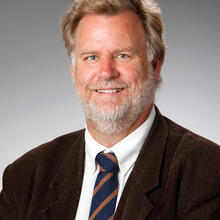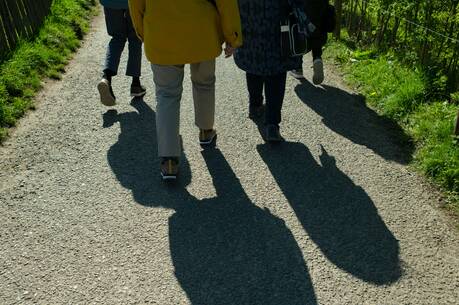A Woman Beloved by God
Jesus’ love for the weak and marginalized is made manifest in a powerful account in Luke’s Gospel, as is the human willingness to label and disenfranchise people we consider less worthy. In today’s narrative, Jesus suggests that we start to identify who we truly are in relationship not to social standards but to God’s overwhelming love. Jesus is invited to eat at the home of a Pharisee named Simon. His identity is clear: Simon, the Pharisee. But a woman, who remains nameless, operating on the assumption that well-behaved women rarely meet the Messiah, hears of Jesus’ presence in the house and crashes the dinner party. Her identity is also clear: “a woman in the city, who was a sinner.”
When this woman found Jesus, she treated him with honor and love: “She stood behind him at his feet, weeping, and began to bathe his feet with her tears and to dry them with her hair. Then she continued kissing his feet and anointing them with the ointment.” Simon’s response to these demonstrations of affection and love emerge in the context of his understanding of how people should act: “If this man were a prophet, he would have known who and what kind of woman this is who is touching him— that she is a sinner.” A prophet, clearly, should not allow a “sinner,” especially a woman, to touch him; and a woman, a notorious sinner, should not touch a prophet. Everyone knows that.
Jesus responds by telling Simon a story of two debtors, one of whom owed the creditor 500 denarii and the other 50. Seeing that they were unable to pay their debts, the creditor decided to cancel the debts of both debtors. Jesus asks Simon, “now which of them will love him more?” Simon answers by saying that the one with the greater debt will love the creditor more, and Jesus agrees with him. The meaning of this simple story for Simon, the woman and Jesus will soon become clear. It depends upon identifying the creditor and the two debtors.
Jesus explains the story by describing the love the unnamed woman poured out on Jesus, by washing and kissing his feet and anointing his head with oil, which stands in stark contrast to Simon’s diffidence to Jesus. Jesus says, “I tell you, her sins, which were many, have been forgiven; hence she has shown great love. But the one to whom little is forgiven, loves little. Then he said to her, ‘Your sins are forgiven.’” It is with Jesus’ claim that her sins were forgiven that Simon’s friends began to question Jesus and to ask each other, “Who is this who even forgives sins?”
It is the answer to this question, however, that allows the proper identification of all parties in this scenario. Jesus does not deny that the woman is a sinner—she is the one with the greater debt than Simon in Jesus’ parable—but she has correctly identified Jesus as the one who is able to forgive her sins. That is, Jesus is her creditor. She pours out her love on Jesus in thanksgiving for the forgiveness of her sins and in acknowledgment, expressed especially through the anointing with oil, of his messiahship, that he is the one with the authority to wipe away her debt. As a result, Jesus can say to her, “Your faith has saved you; go in peace.”
But Simon is unable either to see himself as a debtor—that is, a sinner—or Jesus as the one who is willing and able to forgive sins. Jesus agrees with the identification of the woman as a sinner, but what Simon does not recognize is that he too is a sinner, even if his debt is lighter. Unless Simon can see himself as “the sinful man” and acknowledge his debt, he cannot be forgiven. Unless he identifies Jesus as the one who can forgive his debt, he cannot turn to him in love and repent.
Yes, the woman is a sinner, but so are we all. Simon judges her on human terms, but we need the ability to identify her as God sees her, known by name and beloved by God, and to recognize in ourselves the need for God’s healing forgiveness regardless of our names or positions.
This article also appeared in print, under the headline “A Woman Beloved by God,” in the June 3-10, 2013, issue.







